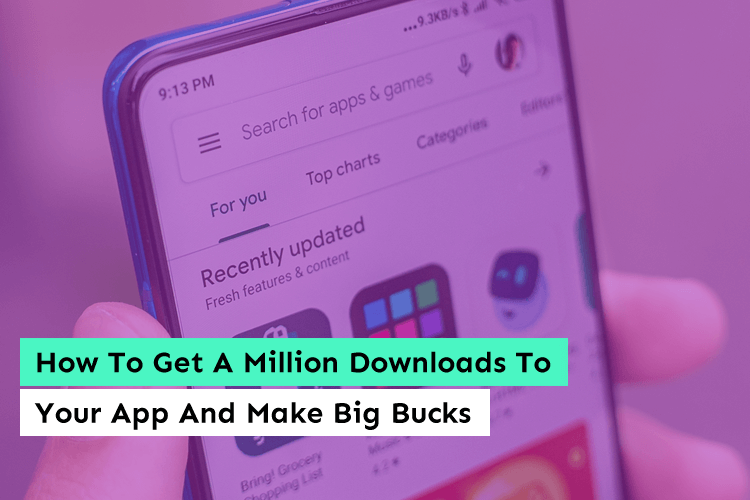ReactJS for Accessibility: Best Practices for Inclusive Design

Have you ever wondered how to bridge the gap between technology and inclusivity? Are you grappling with the challenge of making your ReactJS applications accessible to users with disabilities? If so, you’re not alone. In a digital world where innovation and connectivity are at the forefront, ensuring equal access to information and functionality has become a pressing concern.
We believe that every user, regardless of their abilities, should have the opportunity to fully engage with web applications. That’s why we’ve crafted this comprehensive blog to address the accessibility needs of ReactJS developer for hire and designers. Whether you’re a seasoned professional or just starting your journey, we’re here to offer practical solutions and best practices for creating inclusive designs that leave no one behind.
Join us on this journey as we unravel the intricacies of accessibility and explore the power of ReactJS in building applications that cater to diverse user needs. From understanding the foundations of accessibility to implementing industry standards and user-centric design principles, we’ll equip you with the tools and knowledge to make a positive impact.
In this blog, we’ll delve into various aspects of accessibility in ReactJS, uncovering the best practices for inclusive design. We’ll explore topics such as involving users with disabilities in the development process, leveraging responsive design techniques, adhering to Web Content Accessibility Guidelines (WCAG), providing clear and descriptive text, creating keyboard-friendly interactions, designing with color accessibility in mind, and providing alternative text for non-text content. Additionally, we’ll discuss the importance of testing and validating for accessibility, as well as the need to educate and train your development team on accessibility principles.
Are you ready to make a difference? Let’s dive in and discover the path to building accessible ReactJS applications that leave no one behind.
Understanding Accessibility
Accessibility refers to designing and developing websites and applications that can be used by individuals with disabilities. It involves ensuring that people with visual, auditory, cognitive, and motor impairments can access and interact with digital content effectively. Accessibility is not only a legal requirement in many countries but also an ethical responsibility to provide equal access to information and services for all users.
In the context of ReactJS development, understanding accessibility means recognizing the barriers that individuals with disabilities may face when using web applications and taking proactive steps to address and overcome those barriers. By incorporating accessibility best practices into your React components, you can create an inclusive user experience that accommodates diverse needs and abilities.
Here are some key aspects to consider when understanding accessibility in ReactJS development :
- Perceivability: Perceivability ensures that users can perceive and understand the content presented in your React components. This includes using proper color contrast for text and background elements, providing alternative text for images, and using clear and concise language to convey information.
- Operability: Operability focuses on ensuring that users can navigate and interact with your React components. This involves providing keyboard accessibility, allowing users to navigate through interactive elements using the tab key, and ensuring that all interactive elements have appropriate focus indicators.
- Understandability: Understandability emphasizes the importance of making your React components easy to understand and use. This includes using clear and consistent labeling for form inputs, providing descriptive error messages and instructions, and ensuring that your components’ overall structure and layout are logical and intuitive.
- Robustness: Robustness refers to building React components that are resilient and compatible across different platforms, devices, and assistive technologies. This involves using valid HTML markup, following the WAI-ARIA (Web Accessibility Initiative – Accessible Rich Internet Applications) guidelines, and conducting thorough testing with assistive technologies to ensure compatibility and interoperability.
By considering these aspects of accessibility, you can ensure that your ReactJS applications are usable by a wide range of users, including those with disabilities. Implementing accessible design principles from the early stages of development not only improves the user experience but also reduces the need for retrofitting accessibility features later on, saving time and effort in the long run.
Moreover, understanding accessibility goes beyond technical implementation. It requires empathy and understanding of the challenges faced by individuals with disabilities. By putting yourself in their shoes, you can gain valuable insights into their needs and preferences, leading to more inclusive and user-centric design decisions.
Remember, accessibility is an ongoing process. As new technologies emerge and best practices evolve, it is essential to stay updated and continually improve the accessibility of your ReactJS applications. By striving for accessibility in your development process, you contribute to a more inclusive digital landscape, empowering all individuals to access and engage with online content.
ReactJS for Accessibility: Inclusive Design Best Practices 101
The inclusive design focuses on creating products and experiences that are accessible and usable by as many people as possible, regardless of their abilities or disabilities. When building ReactJS applications, incorporating inclusive design principles helps ensure that your products are accessible to a wide range of users. Here are some best practices to follow
Involve Users with Disabilities
When designing and developing ReactJS applications, actively involving users with disabilities is a crucial step in creating inclusive and accessible experiences. By engaging users with diverse abilities, you gain invaluable insights into their needs, preferences, and challenges, which can greatly inform your design decisions. Here are some ways to involve users with disabilities in the development process:
User Research and Testing: Include users with disabilities in research and testing sessions to gather insights and identify barriers.
- Accessibility Audits and Reviews: Collaborate with accessibility experts to conduct comprehensive audits and reviews.
- Accessibility User Groups and Communities: Engage with communities of individuals with disabilities to gather feedback and insights.
- Co-Design Workshops: Organize collaborative workshops where users with disabilities contribute their ideas and preferences.
- Usability Testing with Assistive Technologies: Conduct testing sessions specifically targeting users who rely on assistive technologies.
- Continuous Feedback and Iteration: Establish a feedback loop with users with disabilities throughout the development process.
- Collaboration with Accessibility Organizations: Partner with organizations focused on disability rights and inclusive design.
- User Persona Development: Create user personas that represent individuals with different disabilities to inform the design process.
By involving users with disabilities, you can create more accessible and inclusive ReactJS applications that cater to their specific needs and preferences.
Use Responsive Design
Responsive design is an essential practice for creating inclusive and accessible ReactJS applications. It involves designing and developing applications that can adapt and provide optimal user experiences across various devices and screen sizes. Here are some key points to expand on the use of responsive design:
Fluid and Flexible Layouts: Create components with fluid and flexible layouts that adjust to different screen sizes.
- Media Queries: Utilize media queries to apply different styles and layouts based on screen size.
- Mobile-First Approach: Design and develop for mobile devices first and then scale up for larger screens.
- Touch-Friendly Interactions: Ensure interactive elements are touch-friendly and easy to tap on mobile devices.
- Content Prioritization: Prioritize and structure content to ensure important information is displayed prominently.
- Images and Media Optimization: Optimize images and media for performance and responsiveness.
- Test Across Devices: Test your application on various devices to ensure a consistent user experience.
- Accessibility Considerations: Maintain accessibility features across different screen sizes and consider users with disabilities.
By implementing responsive design in ReactJS, you create applications that adapt seamlessly to different devices and provide an optimal user experience.
Follow Web Content Accessibility Guidelines (WCAG)
Web Content Accessibility Guidelines (WCAG) provide a set of internationally recognized standards for creating accessible web content. Adhering to WCAG guidelines is crucial for ensuring that your ReactJS applications are inclusive and accessible to users with disabilities. Here are key points to consider
WCAG 2.1 Level AA: Aim for compliance with at least WCAG 2.1 Level AA, which is widely accepted as the baseline for web accessibility. Level AA addresses a broad range of accessibility requirements and ensures a higher level of inclusivity for users.
- Perceivable Content: Make sure that all content in your ReactJS application is perceivable by all users. Provide text alternatives for non-text content, such as images or multimedia, to make them accessible to users who cannot see or hear them.
- Operable Interface: Ensure that your React components are operable by a variety of users. This includes providing keyboard accessibility, so users can navigate and interact with your application without relying on a mouse or touch screen.
- Understandable Information: Present information in a clear and understandable manner. Use plain language, avoid jargon, and provide proper headings, labels, and instructions. Ensure that error messages are informative and suggest solutions.
- Robust and Compatible: Build your ReactJS application using robust and compatible technologies. Ensure that your code is semantically correct, follows best practices, and works well with assistive technologies and different web browsers.
- Test for Accessibility: Regularly test your ReactJS application for accessibility using automated tools like axe-core and manual testing with assistive technologies. These tools can help identify common accessibility issues, but manual testing is crucial for detecting usability barriers.
- Document Accessibility Features: Provide documentation or an accessibility statement that outlines the accessibility features and considerations of your ReactJS application. This helps users understand the level of accessibility support and any limitations they may encounter.
- Stay Up to Date: Keep up with the latest updates and developments in web accessibility. WCAG guidelines evolve over time, and staying informed ensures that your ReactJS applications remain compliant and up-to-date with best practices.
By following WCAG guidelines, you ensure that your ReactJS applications are accessible to a broader range of users, including those with disabilities. This fosters inclusivity, improves usability, and provides a more positive user experience for all users.
Provide Clear and Descriptive Text
Using clear and descriptive text throughout your ReactJS application is essential for accessibility and inclusive design. Clear text ensures that all users, including those with visual impairments or cognitive disabilities, can understand and navigate your application effectively. Here are key points to consider:
- Descriptive Headings: Use descriptive and hierarchical headings to structure your content. Headings provide a logical outline of your React components and make it easier for screen reader users to navigate and understand the page structure.
- Informative Labels: Ensure that all form elements, buttons, and interactive elements have descriptive labels. Labels should clearly indicate the purpose or function of the element. This helps users understand the intended action and provides context for assistive technologies.
- Error Messages and Instructions: When displaying error messages or providing instructions, use clear and concise language. Explain the issue or required action in plain terms and provide guidance on how to resolve it. Avoid using technical jargon or complex language that may confuse users.
- Readability and Font Styling: Choose legible fonts and ensure an appropriate font size for easy readability. Use sufficient color contrast between text and background to enhance visibility, especially for users with visual impairments. Avoid using small font sizes or low-contrast combinations that can hinder readability.
- Plain Language: Use plain language and avoid unnecessary complexity or ambiguity in your text. Simplify technical terms and jargon whenever possible. This benefits users with cognitive disabilities, non-native speakers, and users who may be unfamiliar with specialized terminology.
- Alternative Text for Images: Provide descriptive alternative text (alt text) for images and graphics. Alt text should convey the content and purpose of the image to users who cannot see it. Use concise and meaningful descriptions that capture the essential information conveyed by the image.
- Translations and Localization: If your ReactJS application is targeted at a global audience, consider providing translations or localization options. Ensure that text is properly translated and culturally appropriate, allowing users to access the content in their preferred language.
- Consistent and Concise Messaging: Maintain consistency in the language and terminology used throughout your React components. Use concise messaging that conveys information succinctly and avoids unnecessary verbosity. This helps users quickly comprehend and interact with your application.
By providing clear and descriptive text, you enhance the accessibility and usability of your ReactJS application. Users, regardless of their abilities or disabilities, can better understand and engage with your content, resulting in a more inclusive and satisfying user experience.
Create Keyboard-Friendly Interactions
Ensuring that your ReactJS application is keyboard-friendly is crucial for accessibility, as it allows users who rely on keyboard navigation to access and interact with your application effectively. Here are key points to consider when creating keyboard-friendly interactions:
Keyboard Focus: Ensure interactive elements receive keyboard focus for navigation.
- Tab Order: Establish a logical and intuitive tab order for components.
- Accessible Forms: Make form inputs accessible via the keyboard.
- Keyboard Shortcuts: Consider providing keyboard shortcuts for common actions.
- Skip Links: Implement skip links to bypass repetitive navigation.
- Focus Management: Manage focus appropriately during dynamic updates.
- Test with Keyboard Navigation: Thoroughly test the application using only the keyboard.
- Documentation and Instructions: Provide clear guidance on keyboard navigation.
By incorporating these practices, you ensure that users can navigate and interact with your ReactJS application effectively using only the keyboard, enhancing accessibility and usability.
Design with Color Accessibility in Mind
Considering color accessibility when designing your ReactJS application is crucial for ensuring that users with visual impairments or color vision deficiencies can perceive and distinguish important information. Here are key points to keep in mind when designing with color accessibility
- Color Contrast: Use sufficient color contrast between text and background elements to ensure readability. Follow WCAG guidelines for minimum color contrast ratios (e.g., 4.5:1 for normal text, 3:1 for large text). This ensures that text is legible for users with low vision or in different lighting conditions.
- Avoid Color as a Sole Indicator: Do not rely solely on color to convey important information or indicate errors. Use additional visual cues, such as icons, text labels, or patterns, to ensure that users who cannot perceive color can still understand and interact with your application.
- Color Blindness Considerations: Consider the needs of users with different types of color blindness, such as red-green or blue-yellow deficiencies. Avoid relying on color combinations that may be challenging for color-blind users to distinguish. Test your application using color blindness simulation tools to ensure that critical information is still perceivable.
- Icon and Text Combinations: When using icons to represent actions or features, provide text labels alongside them. Text labels help users understand the purpose and functionality, especially for users who may not easily recognize or interpret the icons.
- Color Customization Options: Consider providing color customization options in your ReactJS application. Allow users to adjust color schemes or choose high-contrast themes that suit their visual needs and preferences. This empowers users to adapt the application’s visual presentation to their specific requirements.
- Test with Color Vision Simulation: Use color vision simulation tools or browser extensions to test how your application appears to users with different types of color vision deficiencies. This can help identify potential issues and ensure a more inclusive color design.
- Documentation and Guidelines: Provide clear guidelines and documentation on color usage and accessibility considerations for your application. Educate designers and developers on the importance of color accessibility and how to implement it effectively.
By designing with color accessibility in mind, you ensure that users with visual impairments or color vision deficiencies can effectively perceive, understand, and interact with your ReactJS application. Implementing appropriate color contrast, avoiding reliance on color alone, and providing alternative cues help create a more inclusive and accessible user experience.
Provide Alternative Text for Non-Text Content
Including alternative text (alt text) for non-text content is essential for accessibility in your ReactJS application. Alt text provides a textual description of images, graphics, and other non-text elements, allowing users with visual impairments or those who use assistive technologies to understand the content. Here are key points to consider when providing alternative text
- Informative Descriptions: Write concise and descriptive alt text to convey the purpose of the non-text content.
- Contextual Relevance: Ensure the alt text is relevant and meaningful within the surrounding content.
- Decorative Images: Use empty alt text (“”) or role=”presentation” for purely decorative images.
- Meaningful Images: Provide accurate alt text that describes important information conveyed by the image.
- Complex Images or Charts: Consider providing longer descriptions or supplementary text for complex images or charts.
- Captions and Transcripts: Include captions, transcripts, or audio descriptions for multimedia content.
- Testing and Validation: Validate alt text implementation using accessibility tools.
- Documentation: Provide guidelines on writing effective alt text for your team to follow consistently.
By following these practices, you ensure that users with visual impairments or who use assistive technologies can access and understand the non-text content in your ReactJS application.
Ensure Video and Audio Accessibility
Ensuring video and audio accessibility in your ReactJS application is crucial for providing an inclusive user experience for individuals with hearing impairments or those who rely on assistive technologies. Here are key points to consider when ensuring video and audio accessibility:
- Captions: Provide accurate and synchronized captions for video and audio content.
- Audio Descriptions: Include additional narrations to describe visual elements in videos.
- Transcripts: Offer text-based alternatives for video and audio content.
- Accessible Media Players: Use media players that support captioning, audio descriptions, and keyboard navigation.
- Test Accessibility Features: Verify the correct implementation and synchronization of captions, audio descriptions, and transcripts.
- Volume Controls: Provide adjustable volume controls within the media player.
- Document Accessibility Support: Communicate the availability and accessibility features of your video and audio content.
- Educate Content Creators: Train producers on creating accessible media and provide guidelines for best practices.
By implementing these practices, you ensure that users with hearing impairments or those who rely on assistive technologies can access and engage with your video and audio content in your ReactJS application.
Test and Validate for Accessibility
Testing and validating your ReactJS application for accessibility is crucial to ensure that it meets the needs of users with disabilities and complies with accessibility standards. Here are key points to consider when testing and validating for accessibility:
- Automated Testing: Use automated accessibility testing tools to scan for common issues.
- Manual Testing: Conduct manual testing using assistive technologies and perform keyboard navigation tests.
- Screen Reader Testing: Test your application with popular screen readers to ensure compatibility and proper announcement of content.
- Color Contrast Testing: Verify that text and background colors meet WCAG guidelines for sufficient contrast.
- Form Validation and Error Handling: Test form validation and error messages to ensure they are perceivable and understandable.
- Responsive Design Testing: Test your application across devices and screen sizes to ensure responsiveness.
- User Testing: Engage users with disabilities to test your application and provide feedback.
- Accessibility Audits: Consider professional audits or consultancy to assess compliance and identify areas for improvement.
- Regular Maintenance: Continuously monitor and maintain accessibility as you add new features and content.
By incorporating these testing and validation practices, you can identify and address accessibility barriers in your ReactJS application, ensuring it is usable and inclusive for all users.
Educate and Train your Development Team
Educating and training your development team on accessibility is crucial for building and maintaining accessible ReactJS applications. Here are key points to consider when educating and training your team:
- Accessibility Awareness: Foster awareness among team members about the importance of accessibility and its impact on users with disabilities. Provide resources and real-life examples to help them understand the benefits and challenges of accessibility.
- Accessibility Guidelines: Create and distribute accessibility guidelines specific to your ReactJS development workflow. These guidelines should cover coding practices, design considerations, and testing procedures to ensure accessibility is incorporated throughout the development process.
- Training Sessions: Conduct training sessions or workshops on accessibility best practices, including topics such as semantic HTML, ARIA roles and attributes, keyboard navigation, focus management, and WCAG compliance. Encourage discussions and provide hands-on exercises to reinforce learning.
- Accessibility Tools and Resources: Introduce your team to accessibility testing tools, browser extensions, and assistive technologies. Share relevant resources, documentation, and online tutorials to help them gain practical knowledge and expertise in accessibility implementation.
- Code Reviews and Feedback: Encourage regular code reviews that specifically address accessibility concerns. Provide constructive feedback and suggestions to improve the accessibility of code and components.
- Collaboration with Designers: Foster collaboration between developers and designers to ensure accessibility is considered from the early stages of the design process. Encourage communication and knowledge sharing to address accessibility requirements effectively.
- Continuous Learning: Encourage team members to stay updated on accessibility standards, guidelines, and emerging best practices. Encourage participation in webinars, conferences, and workshops focused on accessibility and inclusive design.
- Inclusive Design Thinking: Promote an inclusive design mindset among your team. Encourage them to consider diverse user perspectives, anticipate potential accessibility barriers, and proactively find solutions that cater to the needs of all users.
- Accessibility Champions: Identify accessibility champions within your team who can lead and advocate for accessibility initiatives. These champions can help mentor others, answer questions, and drive accessibility improvements across projects.
- Feedback and Improvement: Encourage team members to provide feedback on accessibility-related challenges, successes, and areas for improvement. Foster a culture of continuous improvement where accessibility is considered an ongoing commitment.
By educating and training your development team on accessibility, you empower them to integrate accessibility into the core of your ReactJS applications. With the right knowledge and mindset, your team can collaborate effectively and build accessible solutions that prioritize inclusivity for all users.
Wrapping it Up
Building accessible ReactJS applications is not only a legal and ethical obligation but also a way to enhance the usability and reach of your web applications. By following the best practices outlined in this blog, you can create inclusive experiences for all users, regardless of their abilities. Embracing accessibility in your ReactJS development process will lead to more inclusive, user-friendly applications that have a positive impact on a wide range of individuals.
We’re honored to mention that our efforts have been recognized by renowned B2B review and research platforms such as GoodFirms, Clutch, MirrorView, and many more.
Similar Posts

Google Cloud vs. AWS: A Comparison of Cloud Computing Services
Are you currently navigating the intricate cloud computing landscape, pondering which industry titan – Google Cloud or Amazon Web Services (AWS) – holds the key to unlocking your business’s true potential? Fear not, for we are here to guide you through this compelling journey of exploration and comparison. In today’s dynamic business environment, cloud computing […]...

Why Businesses Prefer PHP: Latest Trends of PHP Development to Expect in 2023
Since the PHP web development market is always changing, it is challenging for many businesses to prosper in the digital era. To remain competitive and solidify their position in the industry, PHP web development companies must stay up with the always-evolving trends. To maintain your business one step ahead of the competition, you need an […]...

How To Get A Million Downloads To Your App And Make Big Bucks
You have built an app. It looks amazing. The UI is simple, attractive, full of elements that users will love. The test runs were also great. Your friends and family like it too. And you finally submitted it on the app store and google play store....







